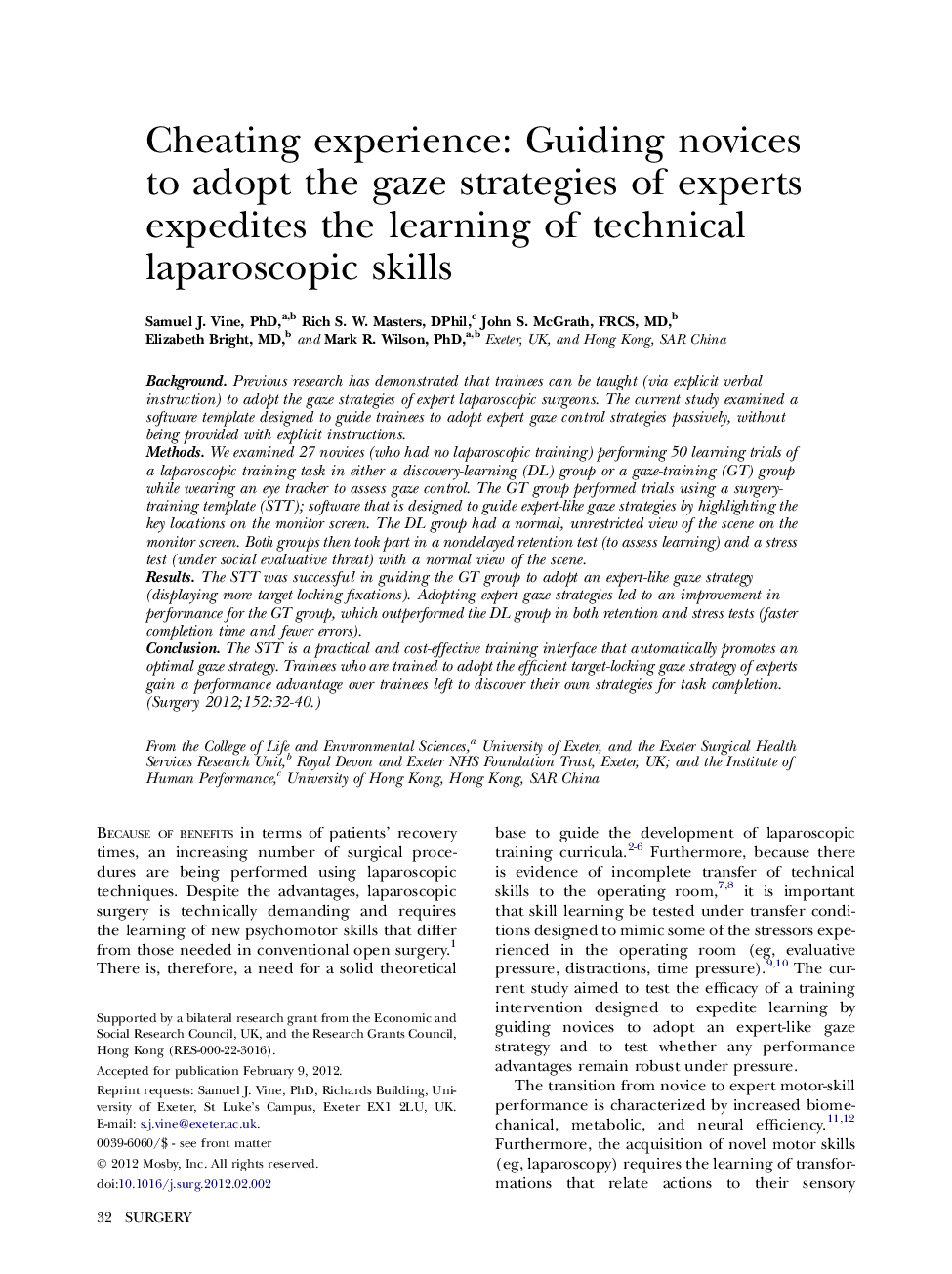| Article ID | Journal | Published Year | Pages | File Type |
|---|---|---|---|---|
| 4307974 | Surgery | 2012 | 9 Pages |
BackgroundPrevious research has demonstrated that trainees can be taught (via explicit verbal instruction) to adopt the gaze strategies of expert laparoscopic surgeons. The current study examined a software template designed to guide trainees to adopt expert gaze control strategies passively, without being provided with explicit instructions.MethodsWe examined 27 novices (who had no laparoscopic training) performing 50 learning trials of a laparoscopic training task in either a discovery-learning (DL) group or a gaze-training (GT) group while wearing an eye tracker to assess gaze control. The GT group performed trials using a surgery-training template (STT); software that is designed to guide expert-like gaze strategies by highlighting the key locations on the monitor screen. The DL group had a normal, unrestricted view of the scene on the monitor screen. Both groups then took part in a nondelayed retention test (to assess learning) and a stress test (under social evaluative threat) with a normal view of the scene.ResultsThe STT was successful in guiding the GT group to adopt an expert-like gaze strategy (displaying more target-locking fixations). Adopting expert gaze strategies led to an improvement in performance for the GT group, which outperformed the DL group in both retention and stress tests (faster completion time and fewer errors).ConclusionThe STT is a practical and cost-effective training interface that automatically promotes an optimal gaze strategy. Trainees who are trained to adopt the efficient target-locking gaze strategy of experts gain a performance advantage over trainees left to discover their own strategies for task completion.
